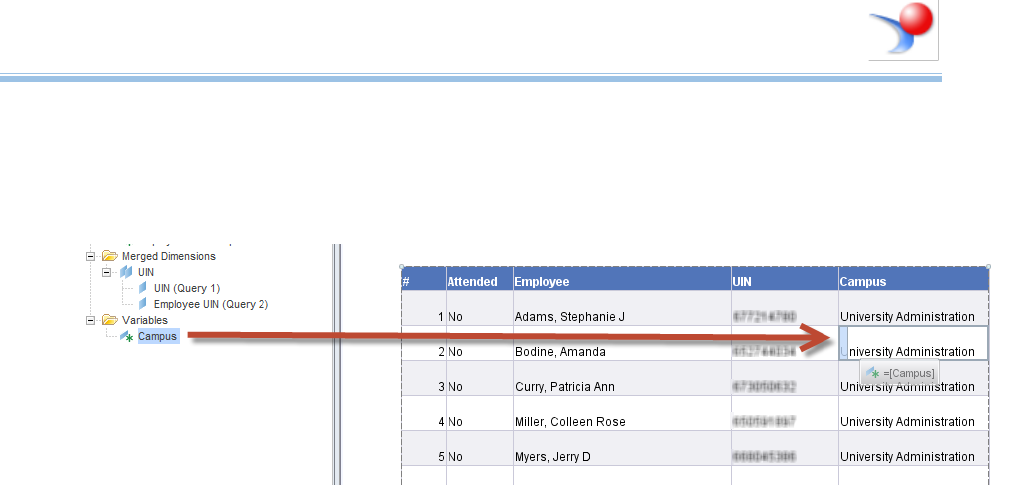
Web Intelligence Quick Tip
Merged Dimensions (Joining Data from Different Data Sources)
The process of joining the data from different data sources based on a common dimension is referred to
as Merging Dimensions. This document will walk you through the process of querying multiple data
sources, merging dimensions, creating variables, and adding the variable objects to a report table.
Note: For this example, it is assumed that you already have two data providers from queries from
different universes. In this example, one query is named Students and the other is named Dept.
Sort Available Objects by Query
1. At the bottom of the Available Objects panel, select the Arranged by: drop-down menu
2. Select Query
The Available Objects list will now be sorted by Query:
Merge Dimension Objects
Merge Dimensions allows you to join the two data sources based on objects with common values. Note
that the objects do not need to have the same name, but must be the same type (character, date,
number). You can also merge two variables, or merge a variable with another object. The variables must
be dimension objects and must come from different queries. You cannot merge objects coming from the
same query.
1. In the Available Objects menu, select the first object to merge.

Web Intelligence Quick Tip
2. Hold down the CTRL key, and select the second object to merge.
Note: The object may be grayed out, but you will still be able to select it.
3. Right-click that object, and select Merge
The new Merged Dimension will be displayed in the Merged Dimension folder:
Create Variables for Objects to be Displayed with Other Data Source
Business Objects has a rule that only non-merged objects from a single data source may be displayed in
a table (or block) of data. In order to include objects from multiple data sources into the same block of
data, you must build varaiables for each object, and those variables must be created as Details of the
Merged Dimension.
1. In the Available Objects listing, right-click the Variables folder
2. Select New Variable
3. Enter a name for the variable.
Note: The name cannot be the same as any of the objects in your query.
4. From the Qualifications drop-down menu, select Detail
Note:
You may also select the Data Access toolbar tab, then select New Variable from the
Data Objects menu.

Web Intelligence Quick Tip
5. Select the button to the right of the Associated Dimension field.
6. Select the Merged Dimension object from the list of available objects.
7. Click OK
8. For the formula for the new variable, double-click the desired object from the Available Objects list
in the variable window. The formula =[object name] will be populated in the Formula box.

Web Intelligence Quick Tip
9. Click OK.
The new detail variable has been created and added to the Variables folder.
10. Drag and Drop the variable into the desired location in the Data Block.
11. Repeat these steps to create variables for all non-merged objects that need to be added to the
report table.
